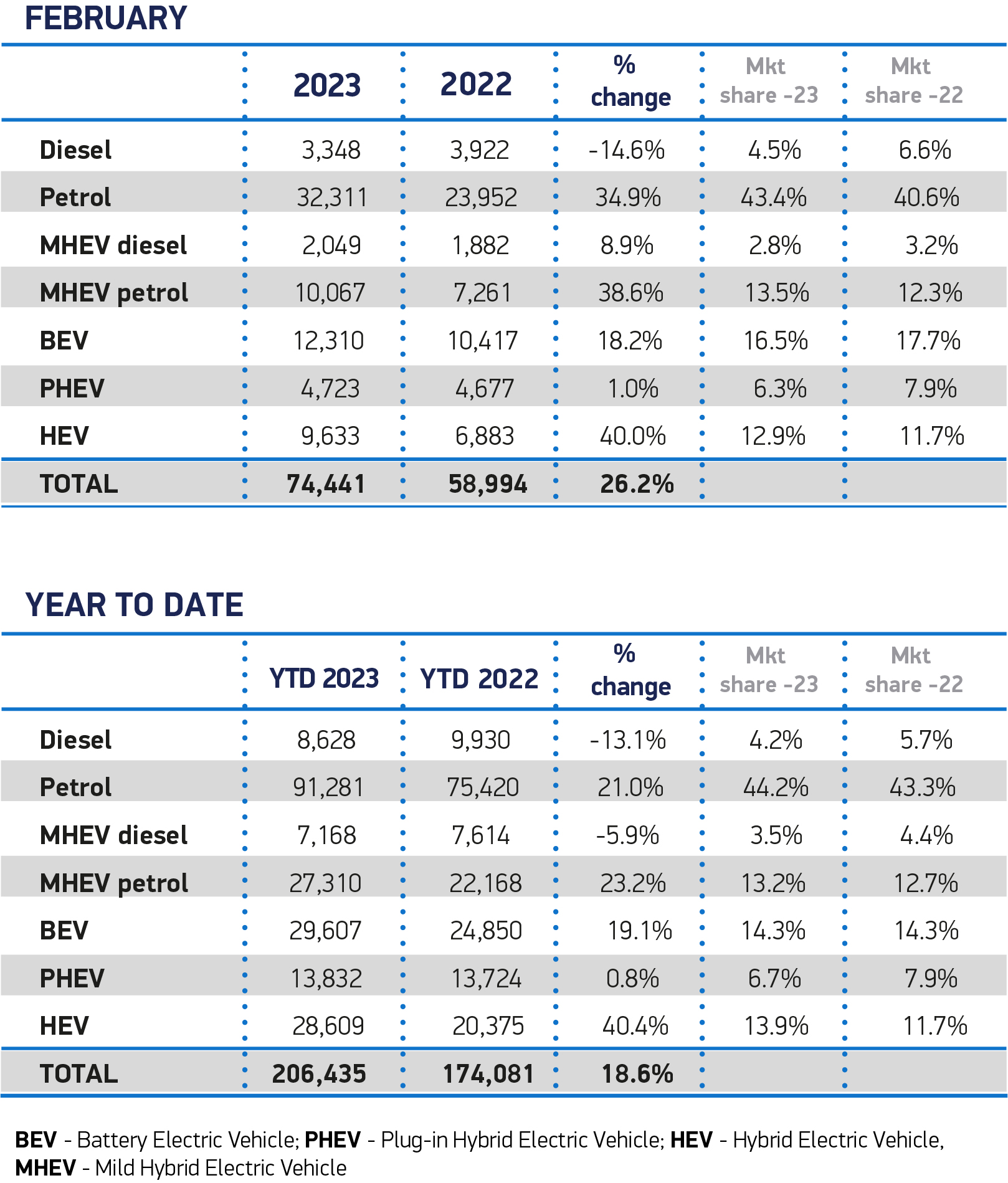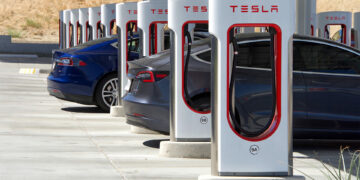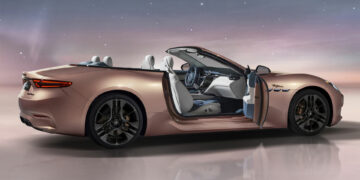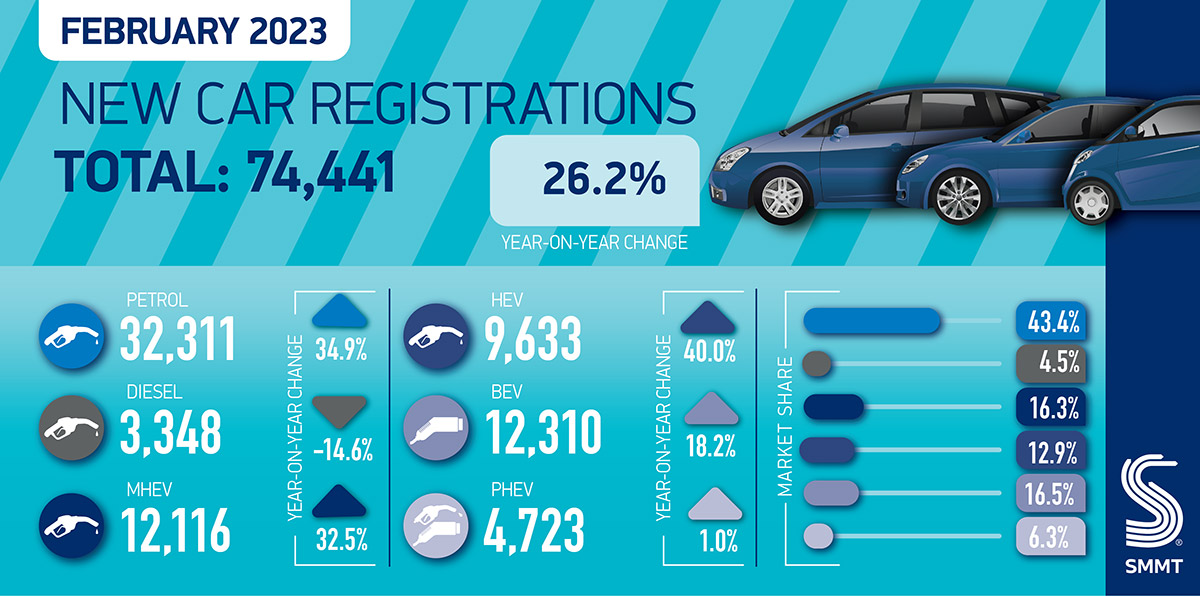The latest data from the Society of Motor Manufacturers and Traders shows that over half the vehicles registered in February 2023 had an electric motor onboard. There are four main types of vehicles that can be supplied with an electric motor. February’s figures show that the most popular version was Battery Electric, where the entire powertrain is electric and there is no hybrid component. This is great news for car makers who have embraced the transition, not so good for those who are still mass producing diesel cars.
Overall, the market recovered nicely on last year’s downturn, with an increase in registrations of more than 26% last month compared to February 2022. Looking at the year so far, the UK has already registered 32,349 cars more than it had in during the same period in 2022.

After lockdown and component shortages, this recent boost to the EV market has been well received by the industry. Gill Nowell, Head of EV Communications for Electrix told us, “With one in six people now choosing to switch to all-electric, these cars are starting to earn public trust – and rightly so. Battery range has improved, new public chargers are being rolled out at speed and drivers are getting used to a new way of driving. What’s more, the uptake of EVs through business leasing and salary sacrifice schemes is becoming more buoyant and these cars will eventually trickle down to the used car market, helping EVs become more affordable to more people, and driving the number of EV owners even higher.”
“We must not sit on our laurels though and whilst the latest SMMT figures are encouraging, we need to continue to work hard to help drivers switch to electric cars. In parallel, the ambition to install 300,000 public chargers by 2030 and improve the infrastructure needs to continue moving at pace. Ultimately, infrastructure must now uphold the trust the public has placed in electric cars.”
Jon Lawes, Managing Director of Novuna Vehicle Solutions also believes that the UK government needs to do more in order to avoid the UK falling behind its European neighbours: “With the budget fast approaching, it is clear that the Government needs to significantly pledge to ramp up investment in the UK automotive supply chain to meet industry demand or risk compromising its 2030 targets. Failure to intervene to adequately support the industry, notably to build a more robust supply of battery technology has stymied the UK's progress to date.”
While petrol and diesel are familiar terms for all motorists, the distinctions between vehicles with electric motors may not always be as obvious. The vehicles included in the SMMT data, will generally fit into one of four categories:-
- BEV
Battery Electric Vehicles – 12,310 sales in Feb 23
BEVs use electric motors, powered by a large array of batteries that are integrated with the car. The battery can be charged using renewable energy from the grid – as well as through braking. In the near future, all new cars sold in the UK will be of the BEV variety. - MHEV
Mild Hybrid Electric Vehicles – 12,116 sales in Feb 23
MHEV’s use a smaller electric motor and battery combination to augment the main engine in the car, resulting in reduced emissions. The battery is recharged when you brake. However, unlike HEV (see below) an MHEV cannot run on pure electric power. - HEV
Hybrid Electric Vehicles – 9,633 sales in Feb 23
HEVs' main drive is provided by polluting fossil-fuel, but it also has the ability to charge its battery through the brakes. The electric motor fitted is strong enough to power the car around town at low speed. - PHEV
Plug-in Hybrid Electric Vehicles – 4,723 sales in Feb 23
PHEVs use a combination of plugging the car in to charge the battery, regenerative braking and burning petrol/diesel in order to charge the battery while driving. They can normally cover at least 20 miles on a charge. Despite their limited range, they are only fitted with slow chargers, so getting that 20-30 miles of EV-powered distance can take several hours at the charger.
Here at WhichEV, we're full expecting the price of EVs and to drop significantly around the end of 2025, as new technologies come into the market and competition starts to heat up.
WhichEV recently commissioned a survey that revealed that over 85% of UK drivers would feel pressure to move across to an electric vehicle sooner rather than later, if manufacturers were able to offer an EV that combined a WLTP range of around 300 miles with a price tag under £20,000.

Only one BEV made it into the February bestsellers on its own, however – the Tesla Model Y. It placed sixth overall.


















Discussion about this post